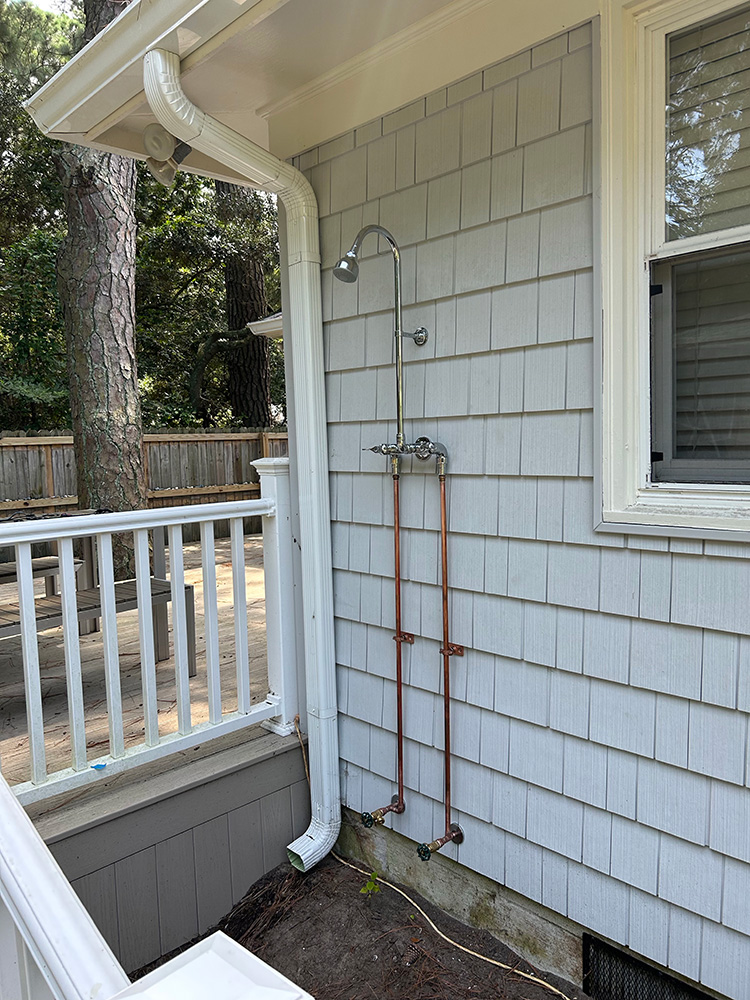Pipe Cleaning & Repairs
Atomic Plumbing is Hampton Roads’ leader in water heater installation and replacement.
Looking for drain maintenance or repair?
Did you know that the average U.S. homeowner spent more than $3,000 on home repairs and upkeep this past year? While that number can seem high, this is for routine maintenance, and any unexpected problems may cause that number to increase two-fold or worse. If you live in a house you own, home maintenance is costly because so many independent systems come with separate issues to resolve. But even with the best oversight, plumbing problems do occur. These problems are caused by various factors, such as condition, weather, and neglect. Read on to learn more about these problems, their causes, and how you can avoid them with regular pipe cleaning & repairs.
Ready To Start
Always hiring and always available.
How Old Pipes Cause Plumbing Problems
One of the major systems in a home is the plumbing system. This system is a series of faucets and drains that lead to an interconnected web of piping that is mostly behind walls or below ground. Like any system, it relies on regular maintenance and homeowners who are knowledgeable about it. Old pipes are more susceptible to the wear and tear of usage. Identifying if they are old, taking care of their existing system, and getting a pipe replacement as needed are all necessary steps to avoid a serious problem.
What Age of Pipes Is Considered Old?
What makes a pipe old depends on the construction material. Metal pipes have the shortest lifespan, capping out at around 50 years. However, some types of metal are more susceptible to breaking down, especially if the water they transport has high acidity. This includes cast iron pipes and galvanized steel piping, although sometimes a galvanized pipe can last longer.
Plastic Pipes
Plastic pipes have a much longer shelf life, lasting up to 100 years. Not all plastics are equal, and some end up having a shorter life expectancy. Polybutylene piping, in particular, can have a much shorter lifespan, with leaks starting after just 10-15 years. The first consideration for the age of the pipes in your home is the home itself. If it is fairly new construction, then you don’t have anything to worry about. But if you have an older home, say 60 years or so, getting an inspection to determine their condition could be prudent.
What Pipe Materials Become Dangerous Over Time?
The most obvious case of piping materials becoming dangerous is when you are dealing with lead pipes. Over time, lead piping can corrode can release toxins into the water that flows through it.
This can lead to a variety of health problems, including:
- High blood pressure
- Hypertension
- Kidney problems
- Reproductive problems
- Pregnancy complications
Lead Pipes
Lead is especially dangerous for children and can cause the following:
- Learning problems
- Hyperactivity
- Anemia
- Hearing problems
- Stunted growth
You should know that small amounts of lead aren’t harmful. Showering in lead-contaminated water isn’t dangerous since absorption through the skin isn’t possible.
Helping Homes & Businesses
Norfolk Homes Helped
Norfolk Businesses Helped


Free Estimates
Stop drain problems before they start. Call Atomic to schedule preventative or routine maintenance.
Commonly Asked Questions

How Often Should Old Pipes Be Inspected?
A general rule for homeowners is to get their home’s plumbing system inspected every two years. By maintaining this schedule, you are able to get ahead of a problem before it becomes more severe and, thus, more expensive. A complete plumbing inspection should include checks on water pressure and drains. A sewer camera can also be used to inspect sewer lines for any potential issues. The piping in the kitchen area is more at risk for corrosion and leakages. A good inspection will also include checking out the water heater. The other two areas that a plumbing inspection will include are any outside piping and underneath the home, if it is on a raised crawl space. Outdoor piping is more susceptible to the elements and can become damaged. The professional may take samples for testing when the condition of the pipes can not be determined.
In between hiring a professional, homeowners can perform simple inspections to look for leaks and other damage. Some visual signs include the pipes’ discoloration, dripping water, and rust. Without being too paranoid, any unusual sounds, smells, or changes in appearance might be reason enough to have a professional take a look.
Many factors cause a pipe to break, including high water pressure, blockage, tree roots, and freezing weather. But old age is another major factor. The biggest threat to older pipes breaking is that with time, they erode. This erosion makes older pipes more vulnerable to breaking by the above-mentioned factors. Metal pipes that are vulnerable to corrosion present another issue, as narrowing pipes are vulnerable to blockage. This is in addition to the general buildup that occurs over the life of the pipe.
By performing basic visual inspections, you can spot the plumbing problems that come with older pipes. Spotting leaks in exposed pipes is fairly easy, as obvious warning signs include puddles of nearby water and discoloration of walls or floors. The signs of possible corrosion are not as obvious. Although some are similar to leakages, these signs include discoloration and stains. Other signs of corrosion include dimples, pimples, and flaking. There are also signs that you can not visually inspect to identify when old pipes are failing. One way is to check the color of the water coming out of the sinks, bathtubs, and shower heads. If it has a brown or yellowish tint to it, there could be rust. Another method for checking pipes that aren’t visible is to keep a close eye on your water bill. If the balance has increased and remained high without any drastic change in usage, this could signal that you have a leak out of sight.










